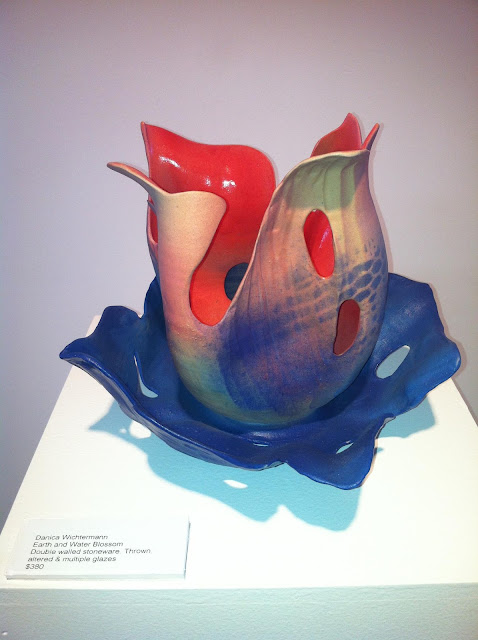I made a whole body of work, a lot of handbuilt round 45cm (18") platters a few months ago at Central Institute of Technology. I slowly and patiently dried them, and lost a few, and bisqued some, and lost a few, and fired them, (and over fired some), and lost a few - and I find there aren't that many survivors. You may recall I posted a few pics as I went along, I covered some with engobe/underglaze, printed on others and imprinted the last few with my own rubber stamps. I made them carefully, took all precautions I knew of to nurse them along.
So what did I learn? Not much new apart from noting that I am either really stupid (no can't be that) or unlucky (mmmm?) or just a ridiculously pragmatic optimist.
I learnt .....
See you over at Mud Colony where many other potters are sharing their news and views.
So what did I learn? Not much new apart from noting that I am either really stupid (no can't be that) or unlucky (mmmm?) or just a ridiculously pragmatic optimist.
I learnt .....
- about draughts - from which I tried to protect my work as they dried slowly while loosely clad in plastic. Draughts are obviously sneaky little buggers, they hide themselves well and then dry a part of a rim, cause an imbalance of tension as it dries and woo hoo - an insidious crack in my lovingly formed work.
- that I am remarkably patient and that although I went into that residency with a plan, it somehow shifted and became less important as the weeks went by.
- that hand carved rubber stamps have a lot to add to a chunky piece of work, this was a direction I had not seen coming, I enjoy carving my own rubber stamps to press into my clay - as do several of my students. So - a win.
- about letting go with your losses and losing the angst fast. I'm good at that, the piece is dead, move on, make more.
- that some dark clays have so much iron in them that when you fire them to their highest recommended temperature you gain a gritty dark toastiness that obliterates many surface finishes. Actually I already knew this, but the overfiring was a bit OTT.
- that sometimes 'burnt toast' work can look like woodfired stuff - even though that is not one's aesthetic and I'd rather leave that to the experts.
- that blaming the clay doesn't get you anywhere (It was BRT dark, gritty and plastic) and possibly the one I used would not be suitable for large thick flatware. It made up beautifully, but I got a lot of cracking in the drying alone.
- I even threw some shallow cylinders to add as stands or feet on my platters, and noted that though the clay is super gritty, it is manageable and quite pleasant to throw, as long as you arent a total wuss about the dermabrasion bonus.
- I learnt for this body of work I may need a white mid fire clay - and stop getting this mucky dark stuff in among my porcelains, or maybe stop with the low and midfire platter idea - or work out how to do something in that vein in porcelain ; >7
- I learnt the path to the skip and the catharsis of first smashing and then dumping the stuff and walking away.
- I learnt that I am really glad I hadn't committed to a solo exhibition anytime soon based on that residency.
See you over at Mud Colony where many other potters are sharing their news and views.

































